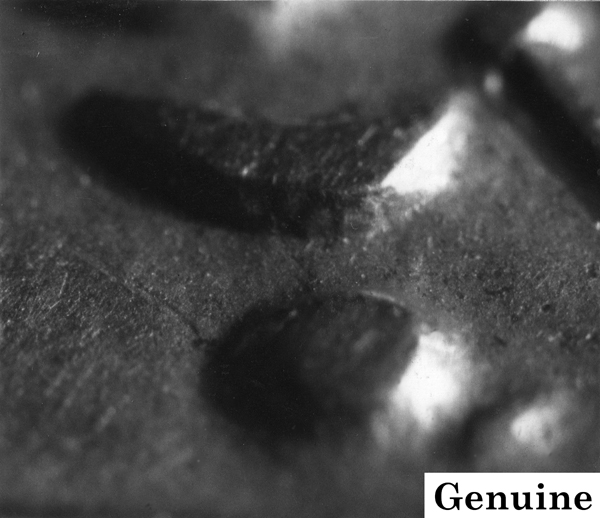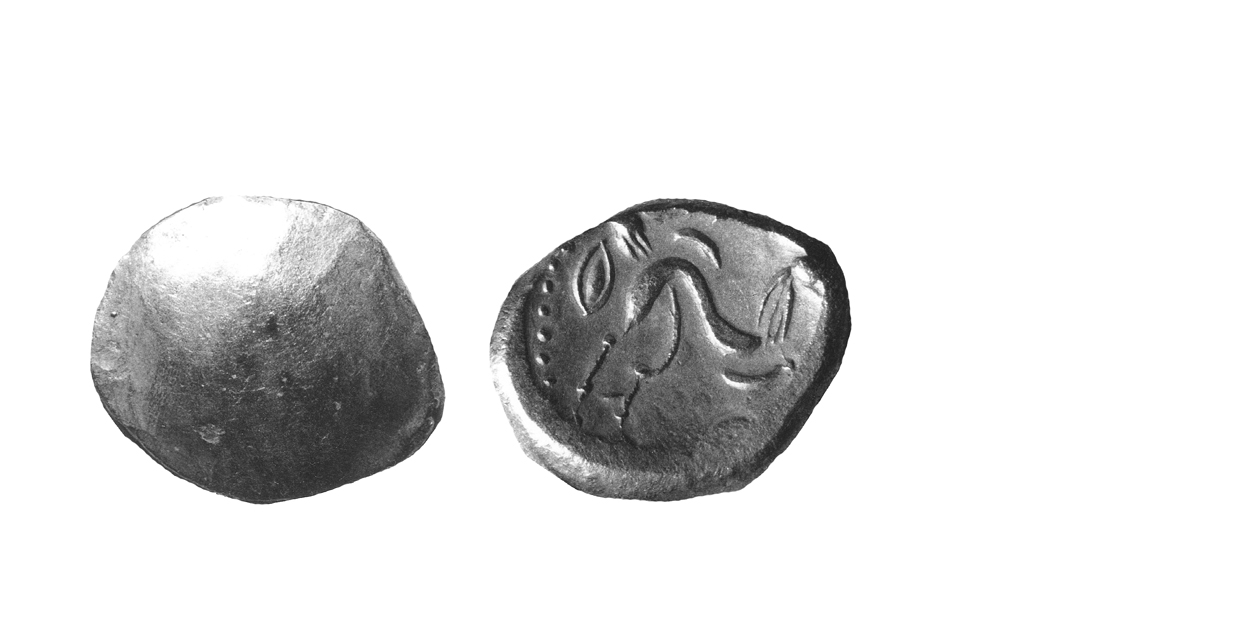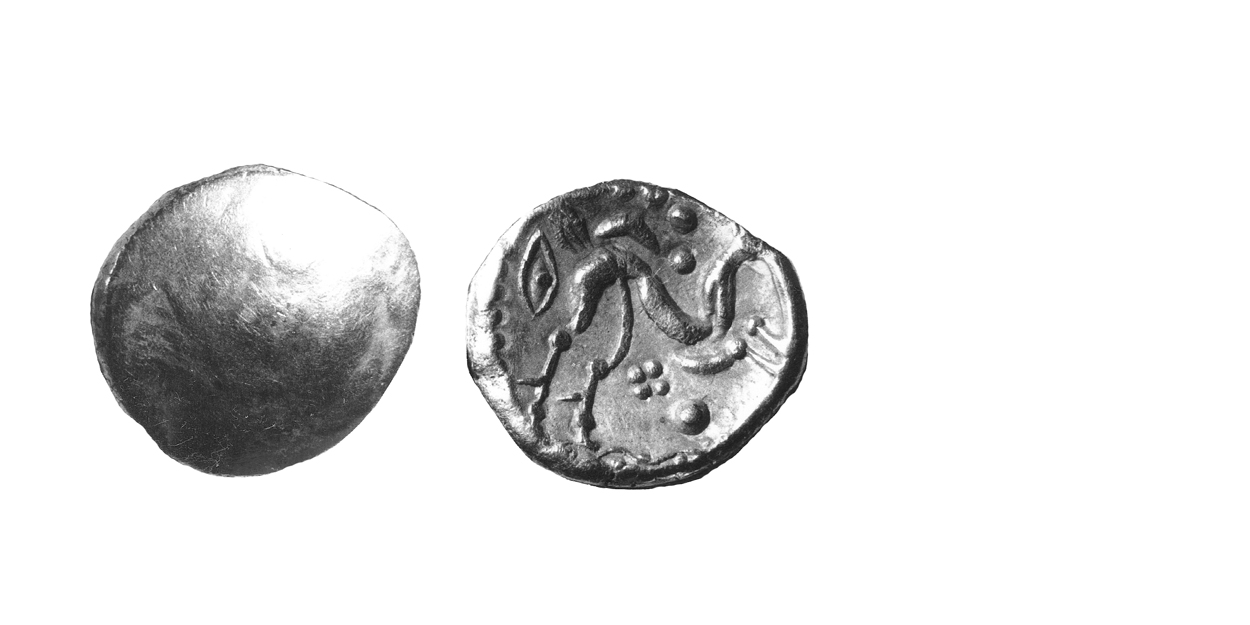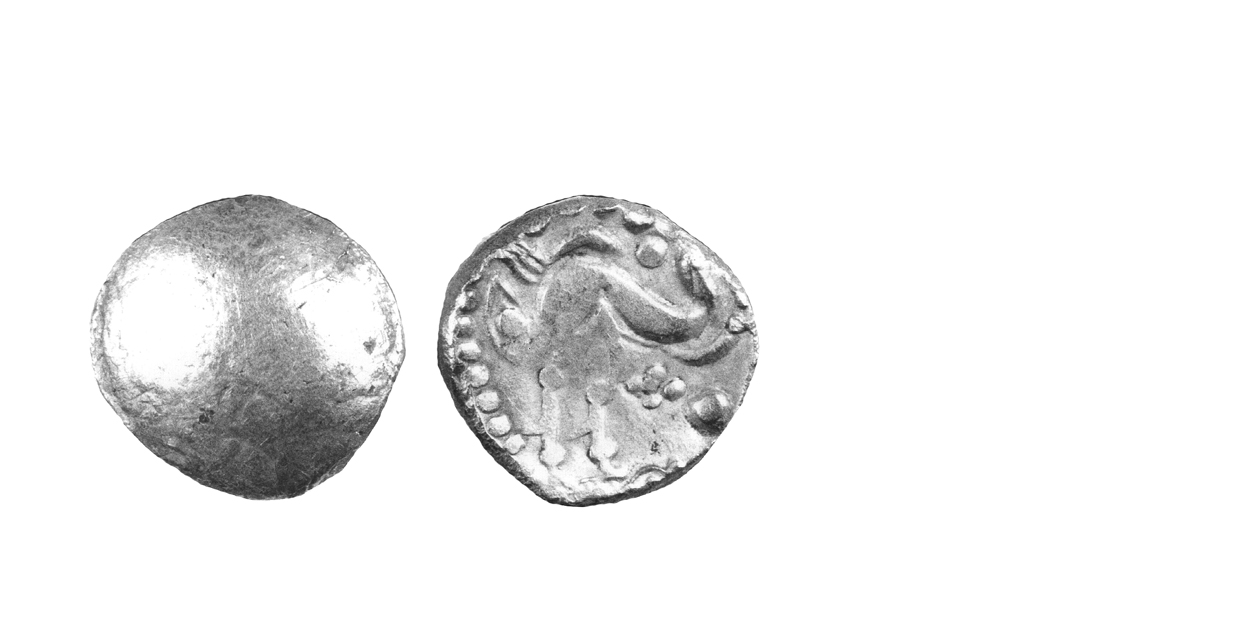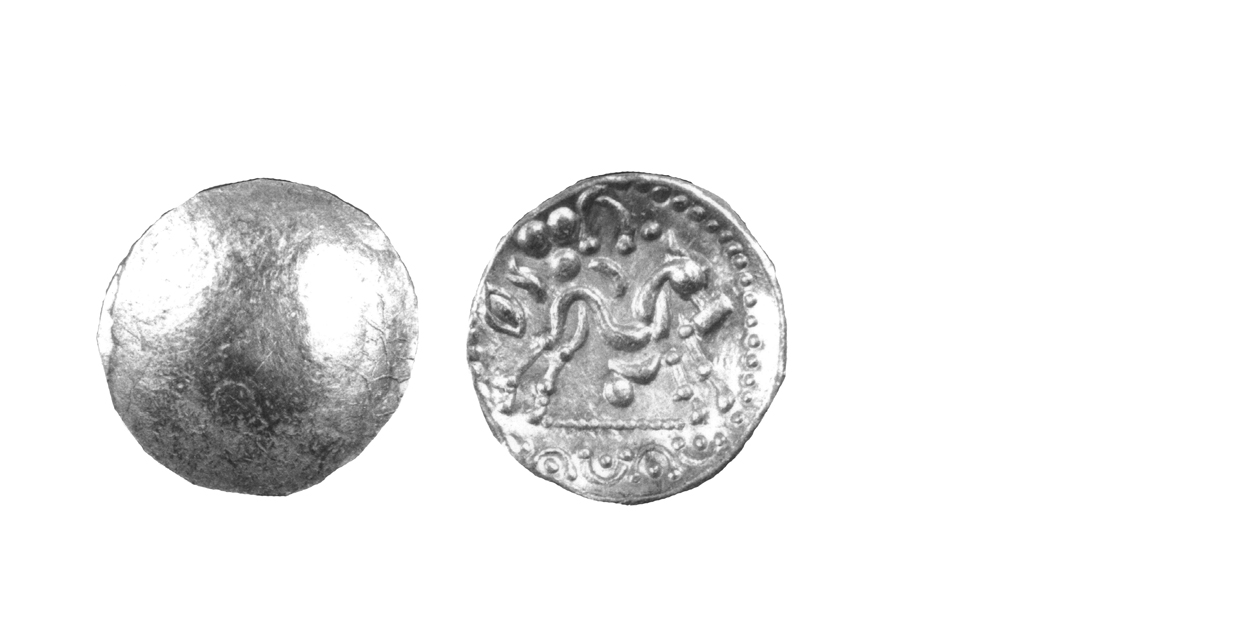Numismatic Articles
Van Arsdell 2014c (Info)
Modern Celtic Fakes 3
Haslemere Die Dressing Errors
By Robert Van Arsdell
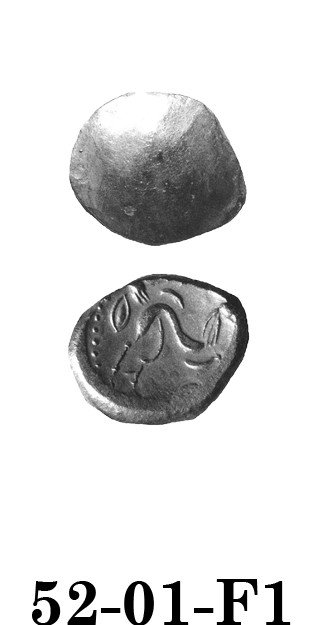
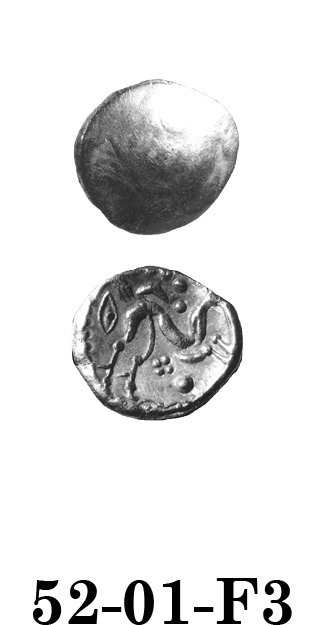
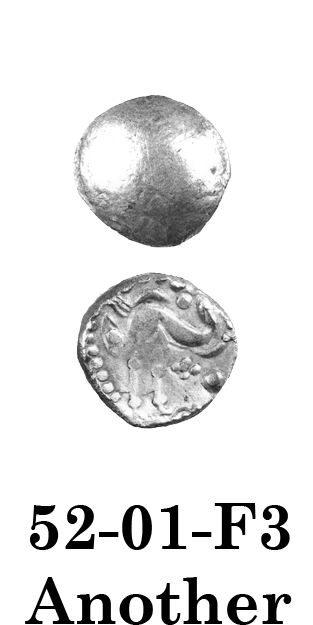
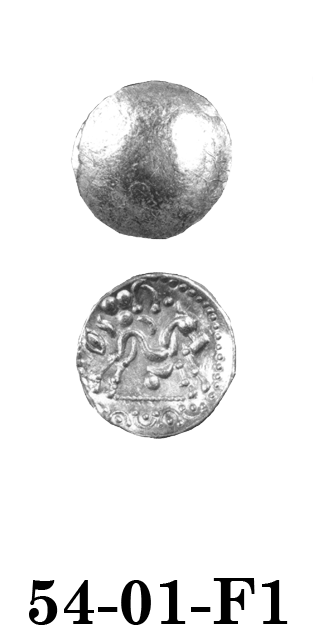
(click on coin image to see detailed information)
Four Haslemere Fakes
The four Haslemere fakes pictured above are all die linked. They serve as a warning that the forger had no intention of retiring in 1986 and would attempt to defraud the numismatic community for years to come.
The first three coins are well known and need little comment. The forger recut the reverse die twice to create the “new varieties” sought by collectors and scholars. The last coin reveals the methods he used to improve his die cutting after his earlier fakes had been condemned. These improvements have never been published and the forger was not tipped off about a new mistake he made.
The first fake was part of the original Haslemere Hoard and presumably appeared about 1960-1962 (1). The second appeared in 1969 (2). These two coins were condemned as part of the original investigations into the Haslemere Forgeries (3). The third coin was condemned by Peter Mitchell and Michael Sharp of Baldwins, and was brought to my attention in August 1986. The last coin was condemned by Italo Vecchi and brought to my attention in September 1986. It is probable the last two coins were struck about the same time circa 1986. The coins weigh 6.1050, 6.0225, 6.4405 and 6.4744 gms – the last two perhaps a bit heavier than genuine coins (4).
The Die Links
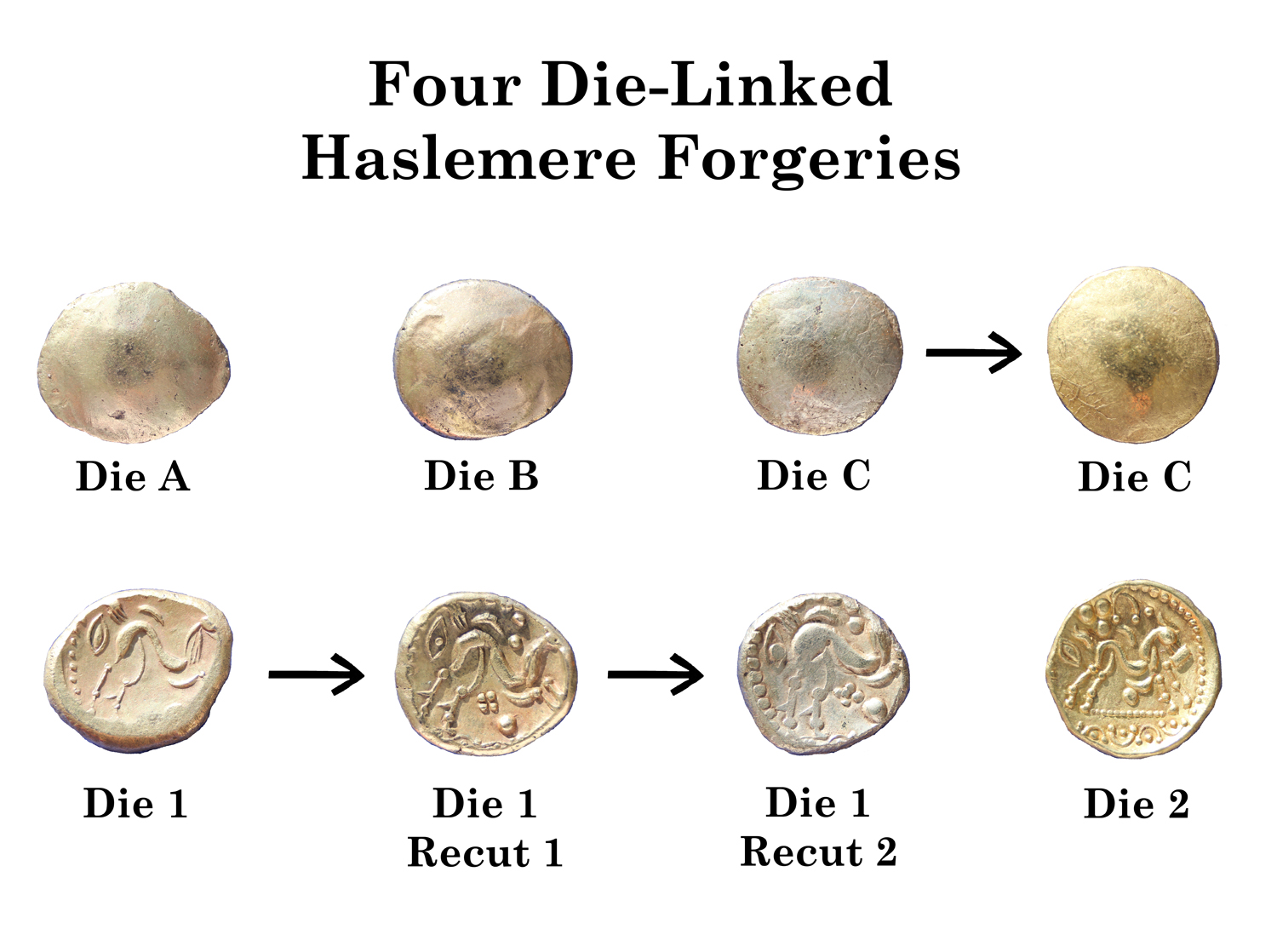
This illustration gives the dies links for the four coins. The original Haslemere Hoard reverse die was recut twice and each recut die was paired with a new obverse.
The final obverse (Die C) is crucial because it had extensive surface cracks, producing raised lines on the coin. Without these lines, it would have been virtually impossible to assign the 54-01-F1 coin to the forger. Luckily, it shares the obverse die with the third coin (52-01-F3 another), proving the source.
First Coin – Die A and Die 1
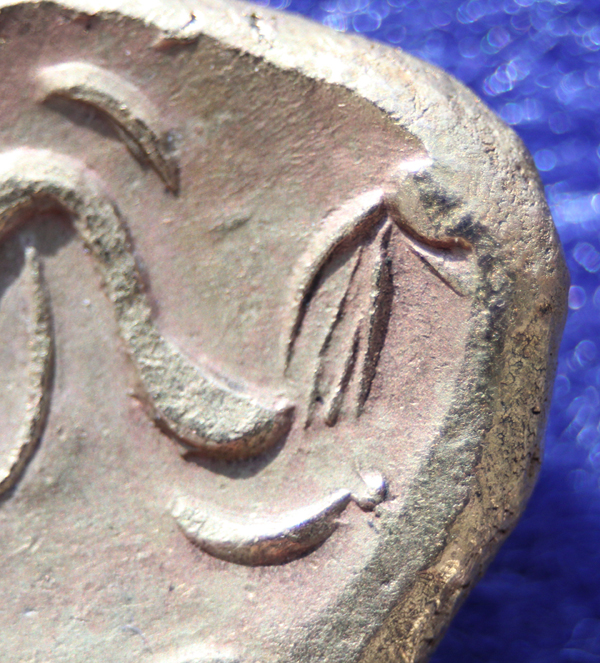
The first coin displays the linear style objected to in 1962 (5).
The stringy image on the coin looks nothing like that on a genuine Gallo-Belgic E stater.
The fake could have been condemned immediately. The decision to excuse the die cutting as “perhaps the work of an ancient forger” proved to be disastrous. The forger had gotten away with it.
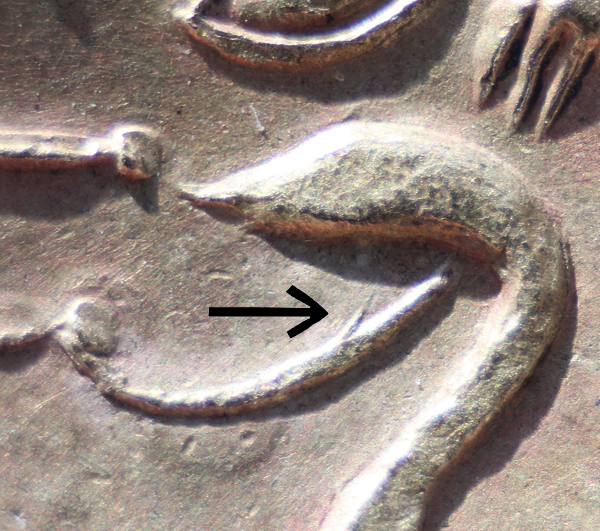
This image shows an engraving slip on the reverse die demonstrating the link to the next coin.
A small line lies behind the leg of the horse (arrow).
Second Coin – Die B and Die 1 recut 1
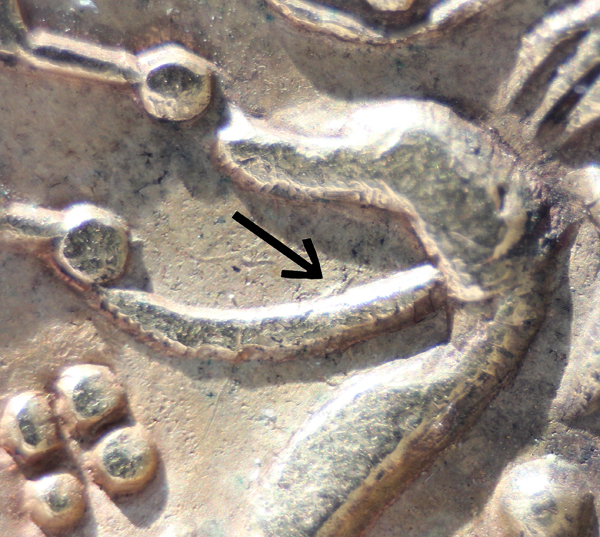
This reverse die was extensively recut about 1969 to produce a new type.
The heavier die cutting is a direct reaction to Allen’s complaint. Unfortunately, the recutting produced the characteristic Haslemere Steps that were used to unmask the forgery.
The engraving slip from the previous coin was almost obliterated by the recut, but a remnant still appears (arrow).
Third Coin – Die C and Die 1 recut 2
The third coin has a further recut of the die, making various changes throughout the image and adding a fifth dot to the cluster below the horse.
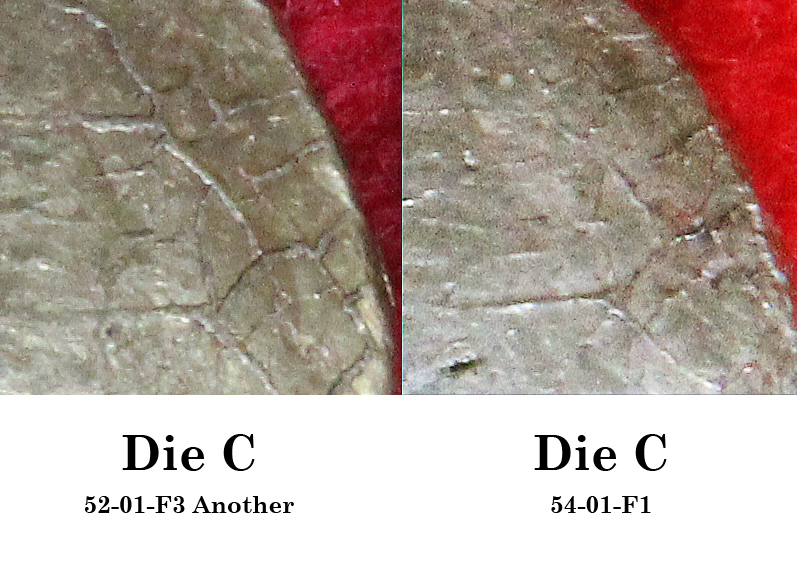
The coin, however, introduces a new obverse die, one with extensive surface cracks. These reappear on coin 4.
Fourth Coin – Die C and Die 2
The last coin is a totally new kind of Haslemere Forgery and it easily passes a cursory examination with a low magnification glass. At first glance, the image looks very much like a genuine coin. However, it's struck from the same obverse die (Die C) as the previous coin – it must be a Haslemere Forgery.
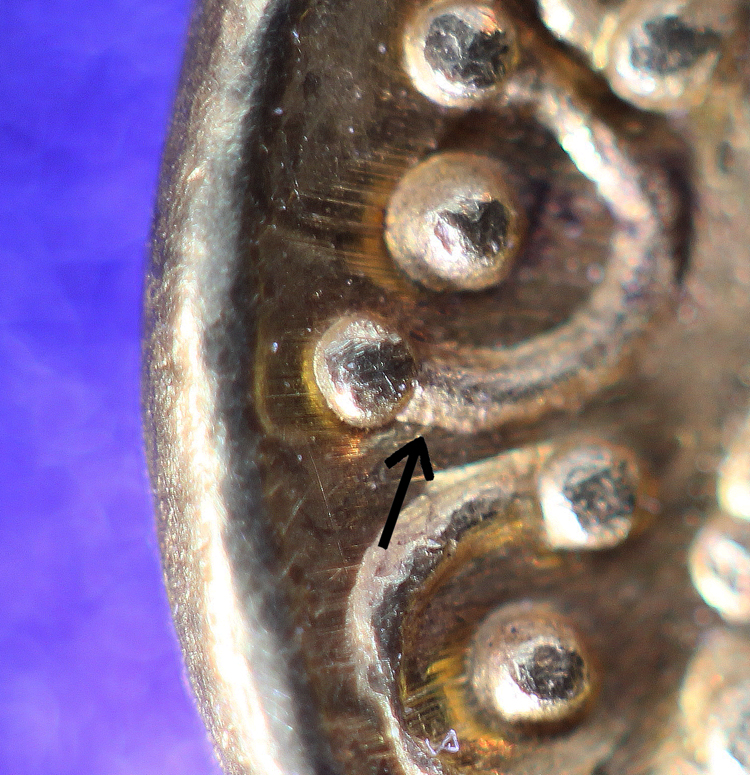
After many years of examining this coin, remnants of Haslemere Steps were finally spotted on the reverse (arrow). They hardly appear at all and are difficult to photograph. The forger nearly removed all of his engraving mistakes when he cut Die 2.
Initially, I believed the die had been sunk using a bow drill (or its modern reincarnation, the Dremel Tool). However, the step remnants suggest the die was cut using gravers instead. The steps were subsequently erased before the die was pressed into service. This erasure was done by a procedure known as Die Dressing and the Haslemere Forger thankfully did too much of it.
Die dressing is a procedure in which engraving errors are removed by filing or grinding the sides and bottoms of the engraved cuts. Rubbing the cuts with an abrasive compound is another way of smoothing them (6).
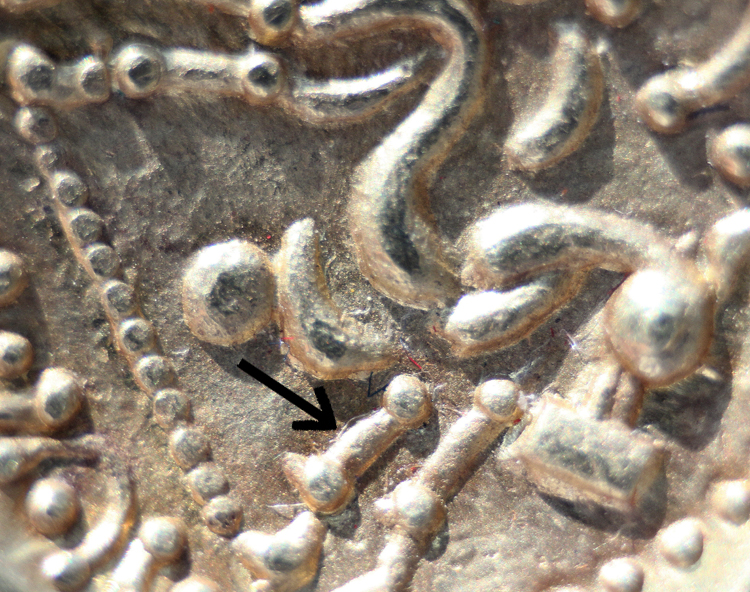
This image shows the results of over-dressing Die 2. First note that die dressing produces lines and curves with virtually no steps or Split End errors (7). Yet, the overall effect somehow looks wrong. The lines and curves don’t have the straight, smooth sides seen on a genuine coin (see genuine coin). Instead of sharp lines, we see rounded humps of metal. The lines of the horse’s leg look like stuffed sausages (arrow).
This stuffed sausage look is the result of over-dressing the design elements. To eliminate the steps, Split End errors, etc., the forger has modified the sides and bottoms of the engraved lines far too much. By over-dressing, he has created a die unlike one cut by a Celtic craftsman.
I include all such die treatment mistakes under the general term Die Dressing Errors. These are very difficult to assess. Their detection begins with a good knowledge of the die cutting on genuine coins of the exact same type. A formal analysis is demanded whenever it is realized that the image details somehow don’t look right. By comparing the fine details of the die cutting work to that on genuine coins, places where over-dressing has occurred will eventually be seen.
In summary, the last coin shown here displays a new Haslemere diagnostic:
Die-Dressing Errors – smoothing the lines and curves on a die by filing, grinding or rubbing with abrasives in such a way as to produce an unnatural effect in the finished coin – one in which the fine details look unlike those on genuine coins.
If this example of the Haslemere Forger’s output makes authenticators feel uneasy, it frankly should. I suspect that the forger continued to improve his die dressing techniques into the 1990s. By 1992, he would have been capable of producing some spectacular work. A forgery detected that year is so good, it cannot be attributed to the Haslemere Forger with certainty – but that is the subject of the next article in this series.
End

